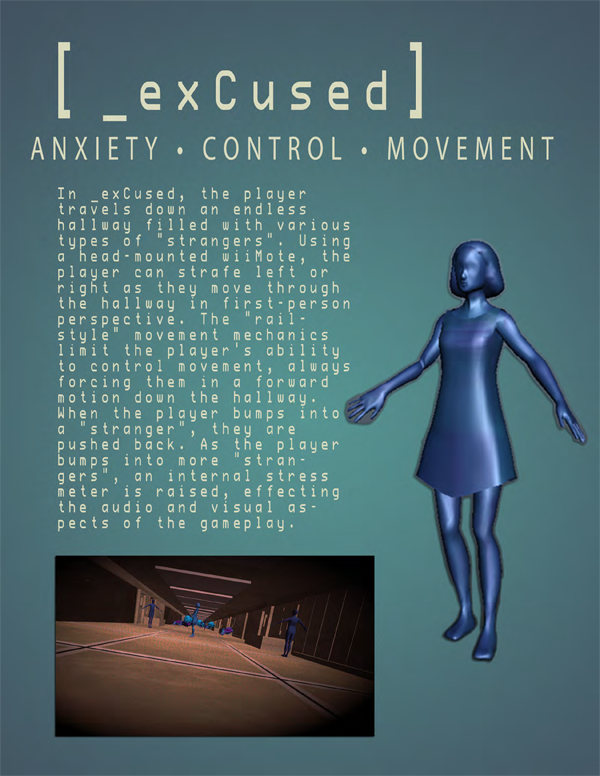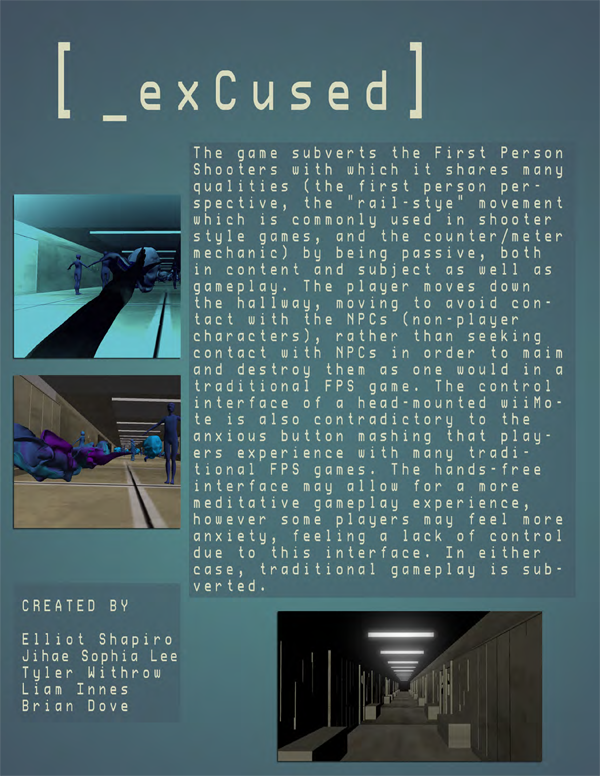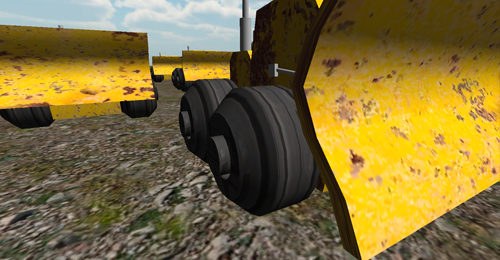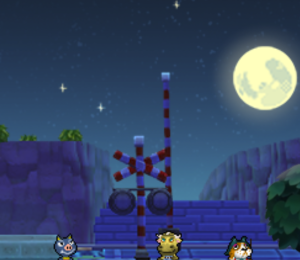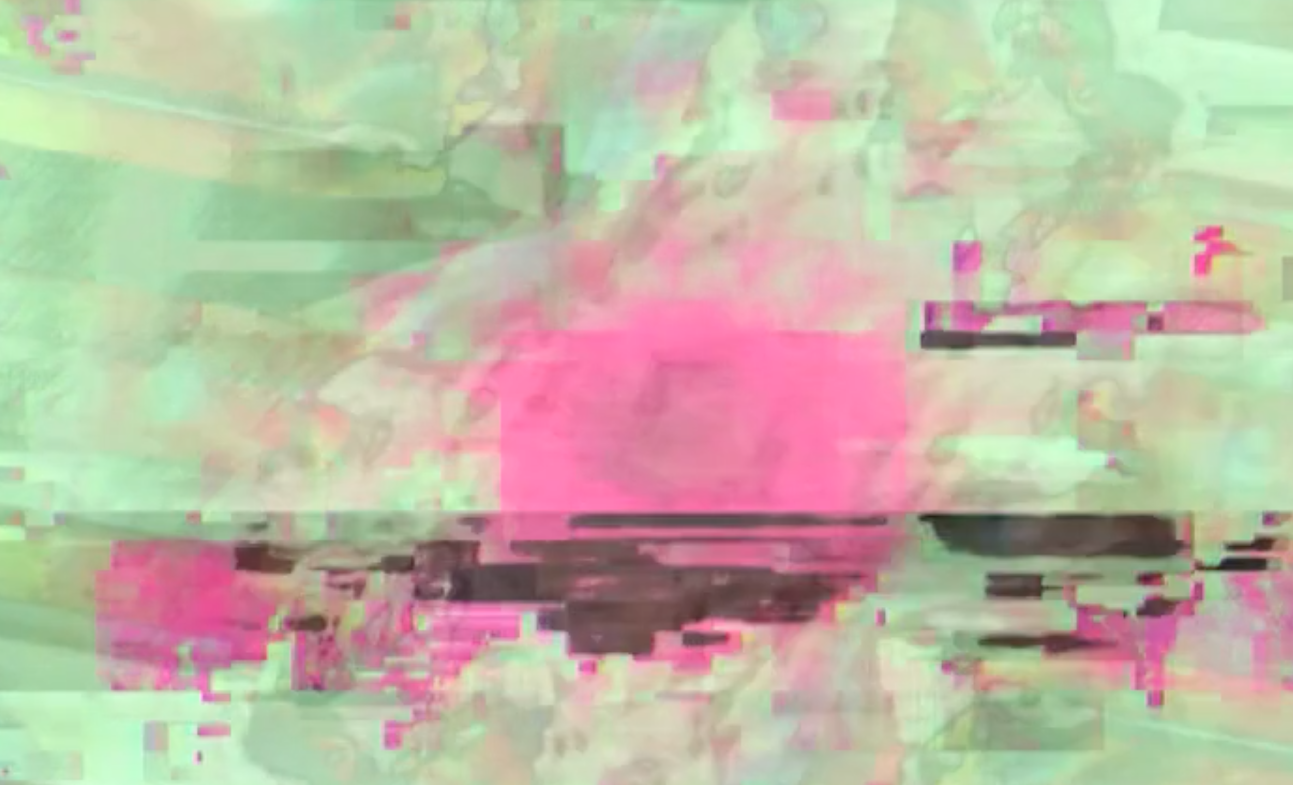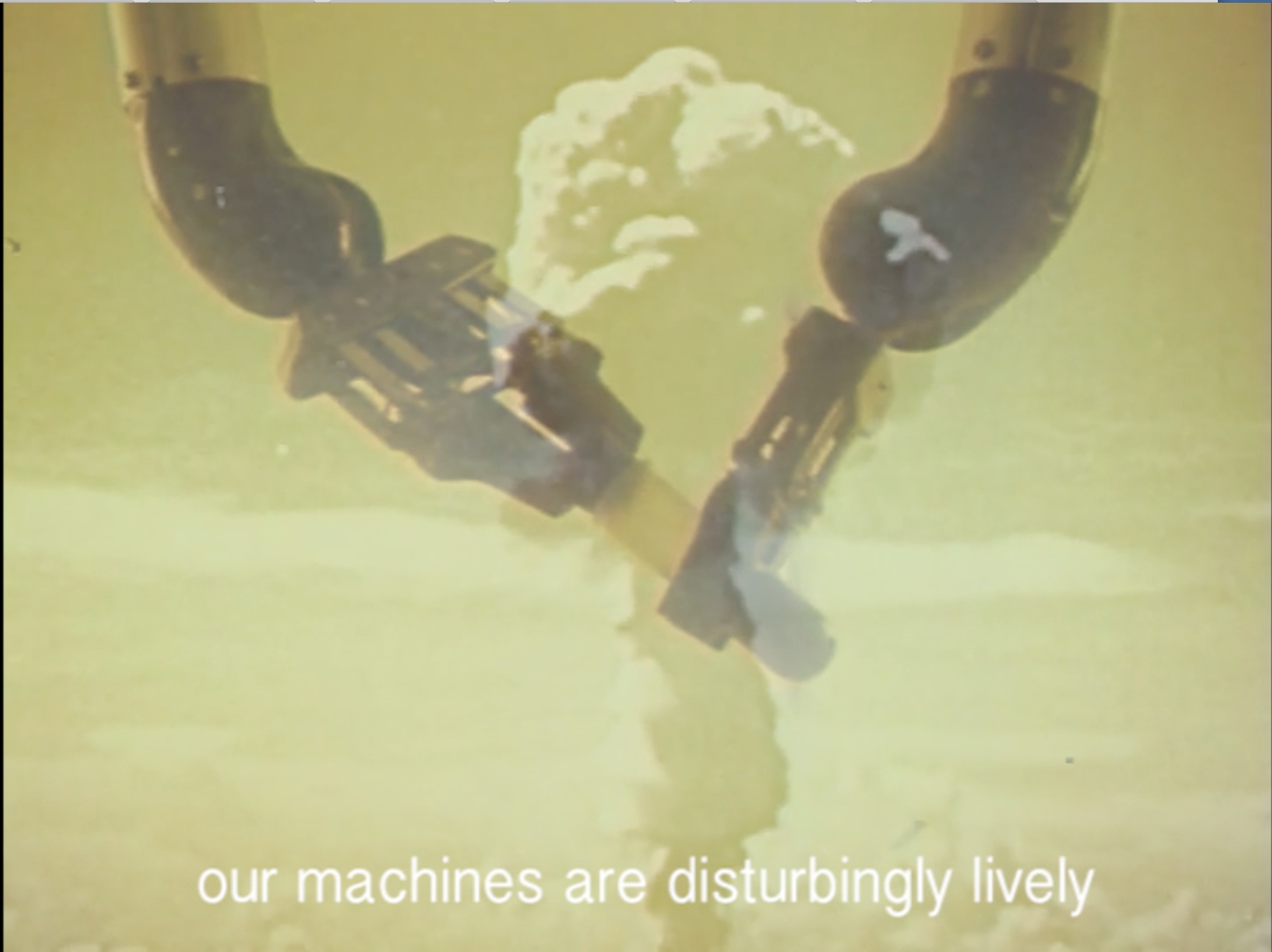What does it mean for something to be virtual? And what does it mean for something to be a world? These are the questions that we rarely ask ourselves as we routinely engage virtual interactive spaces. We take virtual worlds for granted as we are led through them in stunningly realistic games, films, and works of art. Yet, these spaces are thoughtfully and painstakingly constructed.
Virtual Interactive Worlds explores virtual reality, critical game, and interactive 3D in a trans-disciplinary discussion between art, technology, and humanity. Students from diverse majors create team projects, exploring human-computer interaction, art-science collaboration, and emerging form of art and performance for 21st century. The result are thoughtful, theoretically and critically constructed projects.
Course Stats
Professor: Semi Ryu | Associate Professor of Kinetic Imaging
Institution: Virginia Commonwealth University
Course: Virtual Interactive Worlds
Project: Designing Virtual Spaces
Participants: Three groups
Some readings/viewings:
- Virtual Realism, Michael Heim, 2000.
- Critical Play: Radical Game Design, Mary Flanagan, 2013.
- Virtual Art: From Illusion to Immersion, Oliver Grau, 2004.
- The Metaphysics of Virtual Reality, Michael Heim, 1994.
- Rhizome.org
- Leonardo Electronic Almanac (http://www.leoalmanac.org/)
Digital America is following Virtual Interactive Worlds throughout the semester. While our readers cannot play the games (sorry!), the videos, images, and interviews will provide a front row seat to the action. [Next up in December: final projects.]
Project No. 1 – Creating a Virtual Space
The first project brought the groups together for the first time. Students were challenged to: design a navigable virtual space, explore the aesthetic of virtual space design, explore issues of reality and simulation in a conceptual context, and become a productive team member. Each of the three projects approached the assignment very differently.
Collaborative Group – Prime Time
Group members:
- Thomas Marlowe – Modeling, Level Design
- Tyler Withrow – Modeling
- Tian Qin – Modeling/Texturing
- Gerrit Bond – Programming/Project Management
- Brian Dove – Audio/Video
Description: Our project is an exploration of media in popular culture. Television and Internet are used as outlets for transferring information to the public, yet most often this information streams directly into the privacy of our homes. This creates a level of separation from the event displayed and the viewer. Through the stages of our virtual environment we have placed video documentation representing different aspects of widespread media, which are meant to display various levels of separation. We include TV static, celebrity interviews, YouTube video blogs, and documentation of the first moon landing. Each piece immerses the viewer in a different ways and in varying degrees. It is up to the participants to piece together, 1.) where they feel comfortable,2.) what degree of information they are receiving, 3.) how that information was handled, and 4.) why it is handled in such a way.
Collaborative Group – The Household [Video no longer available]
Group members:
- Elliot Shapiro – Programmer
- Travis Schmidt – 3d modeler
- Jacob Graham- 3d modeler
- Quasar Wei – 3d modeler
- Mark Zvijac – sound artist
Description: As players begin The Household, they are placed in a virtual world, but more importantly they take on a role. A dark story unfolds as the player wanders about the domestic setting and observes various things. After a certain amount of game-play, the player realizes that what they observe in-game actually changes the sequence of events.
Collaborative Group – Project Echo [Video no longer available]
Group members:
- Aidan Collins – Programmer
- Jihae Sophia Lee – Textures
- Michelle Farber – 3D Modeling
- Crixell Matthews – 3D Animation
- Liam Jones – Sound
Description:
Project Echo is a game where the player explores blindness and the sense of sight through echolocation. By putting the player in a dark environment, the only practical method of success involves using your voice to see what is around you. You may whisper, hum, speak, scream and shout, or even say ohm for an extended period of time, and light on the screen corresponds to the pitch and length to the sound. While were unable to achieve certain goals in production, the outside space depicts many key aspects of what we intended, including a texture that is all black except for a white outline on edges.
Project No. 2 – Exploring Alternative Game Aesthetics
The piece places the participant in an organic Darwinistic realm. The surrounding environment consists of a dark atmosphere filled with abstracted structures between rolling hills shrouded by 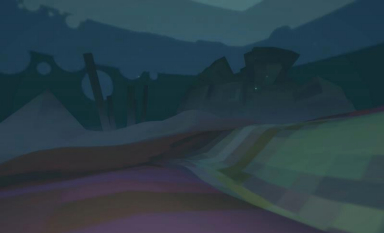 a blue fog. Inhabiting this space are a number of objects resembling minimal forms such as spheres and rectangular prisms. Upon close observation, these objects are revealed to exhibit behaviors similar to organisms as they interact within a food chain scenario. As different archetypes emerge among the populations of shapes, such as the flocking herbivore or the opportunist carnivore, the player begins to understand the interactions through inspection and consideration.
a blue fog. Inhabiting this space are a number of objects resembling minimal forms such as spheres and rectangular prisms. Upon close observation, these objects are revealed to exhibit behaviors similar to organisms as they interact within a food chain scenario. As different archetypes emerge among the populations of shapes, such as the flocking herbivore or the opportunist carnivore, the player begins to understand the interactions through inspection and consideration.
The participant views the environment through a first-person shooter perspective, though any obvious forms of destruction that you may see in a typical fps are stripped from the user’s functionality. The idea of creating an observational being implemented rather than the intentional destruction or killing of the organism plays a key role in the fascination driving the players to immerse themselves. Inspired by Conway’s Game of Life, where certain rules within a simulation create interactions that spawn movement, interaction, and evolution of population structures, the virtual environment seeks to enthrall the user, beckoning a mode of mindfulness within the game space.
The purpose of this project is to demonstrate to viewers the natural capacity of an environment 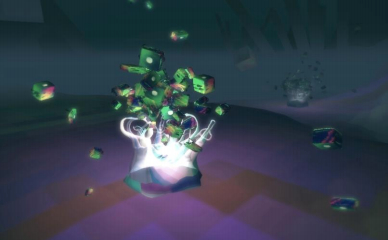 to entice attention and stimulate consideration. As the ecosystem develops, the viewer witnesses the unique growth of the system within the simulated space. The world develops organically and uniquely as the simulated organisms follow the inherent rules. If the user were to simply stand back and watch, the ecosystem would continue to operate in a series of checks and balances, providing a substantial philosophical question to the importance of the viewer for the system. Many organisms will reproduce, creating populations resembling primitive societies within biospheres. The magnitude of the space is intended to inspire awe within the player as they observe the growth of virtual species.
to entice attention and stimulate consideration. As the ecosystem develops, the viewer witnesses the unique growth of the system within the simulated space. The world develops organically and uniquely as the simulated organisms follow the inherent rules. If the user were to simply stand back and watch, the ecosystem would continue to operate in a series of checks and balances, providing a substantial philosophical question to the importance of the viewer for the system. Many organisms will reproduce, creating populations resembling primitive societies within biospheres. The magnitude of the space is intended to inspire awe within the player as they observe the growth of virtual species.
Collaborative Group – Niche Tank [Video no longer available]
Group members:
- Gerrit Bond – Programming
- Michelle Farber – Sound
- Travis Schmidt – Textures
- Jacob Graham, Thomas Marlowe – Modeling
Collaborative Group – [_exCused]
Final Project
Group Effort:
A Tank Defense Game
Community | Resistance | Pacifism
Constructed by:
Jacob Graham, Liam Linnes, Sophia Lee, Travis Schmidt, and Elliot Shapiro

It takes a community, hand in hand, to stop violence. The Square, an interactive
installation, resonates this statement with it’s mechanics. The installation consists of a projected virtual space and two contacts, one to the right and one to the left of the projection, which are held by two performers. The performers call on audience members to help them complete a human chain by joining hands. As the chain is made, the virtual space cycles between two environments and the users are faced with approaching forces which cycle between a bulldozer and a tank. The users prevent these forces from destroying a forest and then resist the
movement of a line of tanks by forming a human barricade. These forces represent violence of
different natures and are characterized as so with abrasive representative audio.
As the collective crowd interacts with the installation, a sense of community emerges as
people have to work together, physically touching and holding hands to resist the machines and
progress through the scenes. Within these scenes, they are introduced to different forms of violence. The bulldozer represents violence towards nature as it is prevented from engaging a forest. The tank represents violence towards humanity as it is a tool of war. The users are assaulted by the harsh audio of the forces of violence and work together to stop them.
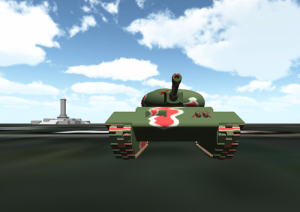 In the last example of violence, the scene with the tank becomes a reenactment the
In the last example of violence, the scene with the tank becomes a reenactment the
Tiananmen Square protest. As the users stop the tank, a virtual person steps out to engage the
tank, acting as a virtual puppet reenactment of the actual event. We felt this action was
necessary as we watched the original footage and realized how few of us had actually seen the
moving footage of the event.
The project blends the real space of the interaction between participants with the virtual
space of to projection. As people form the chain, their orientation with the projected scene
creates the whole of the installation. The chain is formed in front of the oncoming machines in
this telematic interaction.

